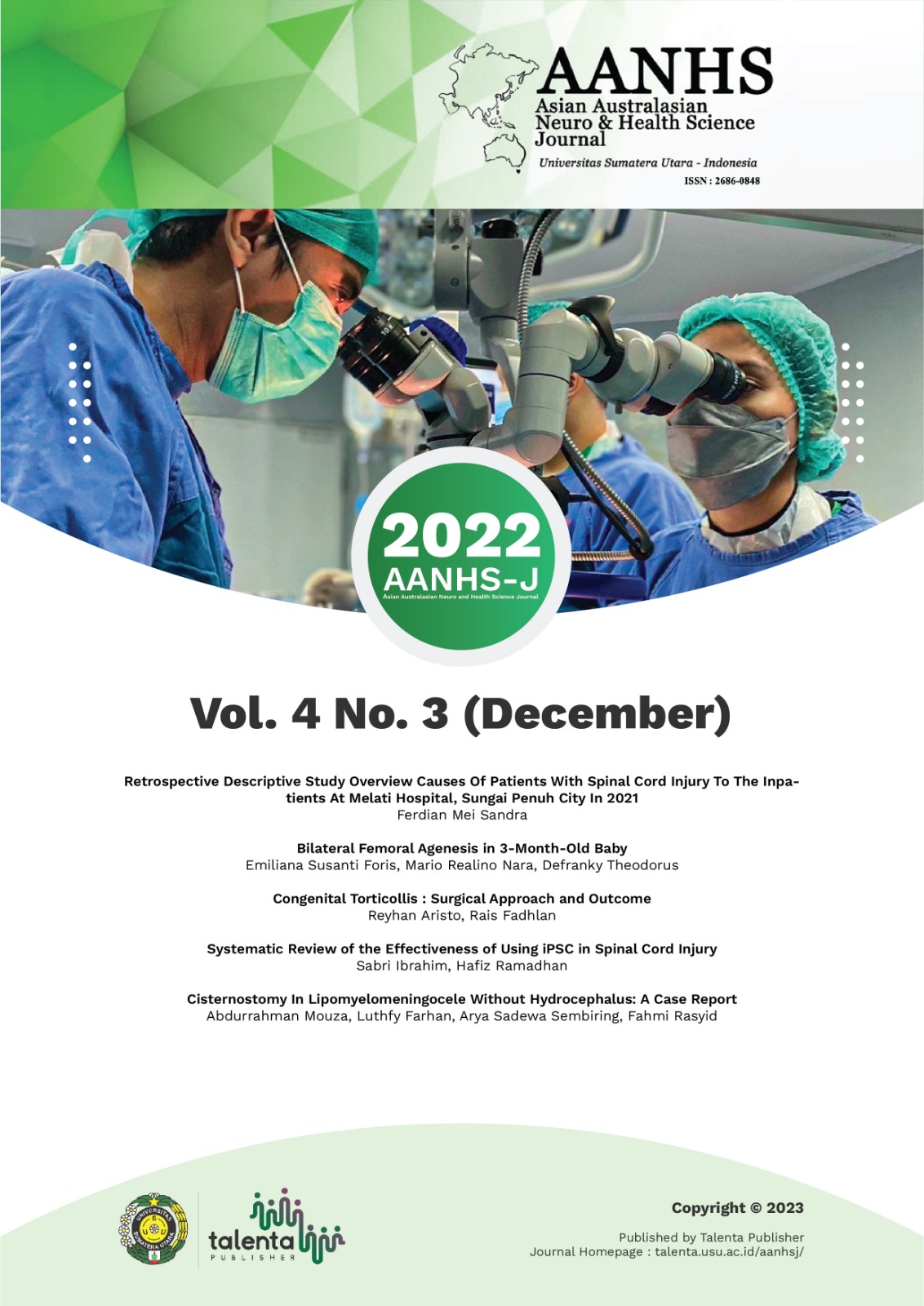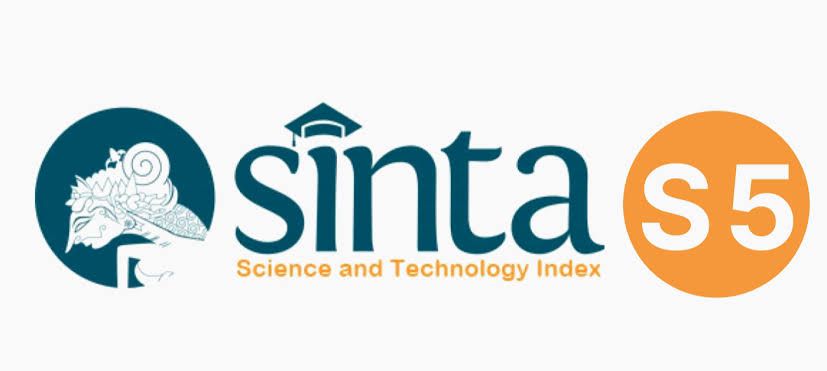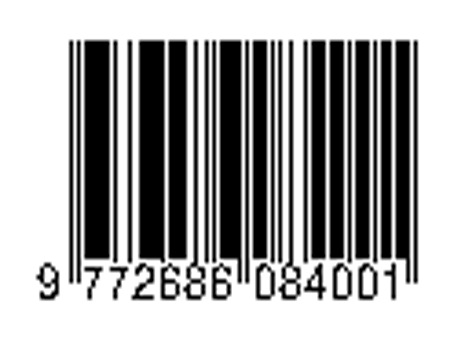Cisternostomy In Lipomyelomeningocele Without Hydrocephalus: A Case Report
DOI:
https://doi.org/10.32734/aanhsj.v4i3.10380Keywords:
Spina Bifida, Cisternostomy, LipomyelomeningoceleAbstract
Introduction: Spinal dysraphisms can be classified as either open or closed dysraphisms. Closed spinal dysraphisms such as lipomyelomeningocele, diastematomyelia, and spina bifida occulta have no exposed neural tissue and are accompanied by cutaneous markers in 43%–95% of cases, and include lesions such as subcutaneous masses, capillary hemangioma, dimples, and hairy nevus. These cutaneous markers can be used to recognize cases in an asymptomatic neonate. LMMC can be associated with additional pathologies, including Chiari malformation type 1 (13%), spina bifida (14.4%), split cord malformations (3.1%), associated dermal sinuses (3.1%), dermoid or epidermoid cysts (3.1%), diastematomyelia (3.1%), terminal hydromyelia (3.1%), anal stenosis (1.0%), and Down syndrome (1.0%).
Case Report: A year old girl, came to our department with chief complaint of lump on the back since the patient was born. No history of increased intracranial pressure was complained. On physical examination, there is no maceration on the lump, and there is no sign of ruptured lump on the back. Patient also has active motoric on all extremity. We diagnosed the patient with spina bifida. We did CT scan of the head to rule out hydrocephalus and MRI for the confirmation of spina bifida. Excision of cele was done. Postoperatively, there is an increased of csf leak of the patient from the excised cele and we decided to do cisternostomy. After cisternotomy, there is no increased of leakage and patient also have good motoric function. Patient was treated in our outpatient clinic and has good recovery after surgery.
Discussion: Lipomyelomeningocele is a rare but complicated defect, lying in the spectrum of occult neural tube defects. It is actually a form of occult spinal dysraphism in which a subcutaneous fibrofatty mass traverses the lumbodorsal fascia, causes a spinal laminar defect, displaces the dura, and infiltrates and tethers the spinal cord. Spinal lipomas and LMMCs are frequently associated with cutaneous and musculoskeletal abnormalities in addition to sensorimotor deficits and urological dysfunction. Cutaneous lesions include subcutaneous lipomas, capillary hemangiomas, complex dimples, and hypertrichosis, whereas complex malformations, such as dermal appendages, are rare. Magnetic resonance imaging is useful in demonstrating the presence of a fatty mass and cord tethering. Surgical objectives in a lipomyelomeningocele repair include removal of the adipose mass, identification of the defect in the lumbosacral fascia for release of the tether, possible release of the filum terminale, preservation of neural elements, and prevention of retethering of the spinal cord. After operation for lipomyelomeningocele, the cord may not be completely untethered, or after a short period may retether
Discussion: Cisternostomy may be done in cases of spina bifida without hydrocephalus in our experience
Downloads
Downloads
Published
How to Cite
Issue
Section
License
Copyright (c) 2022 Asian Australasian Neuro and Health Science Journal (AANHS-J)

This work is licensed under a Creative Commons Attribution-NonCommercial-ShareAlike 4.0 International License.
The Authors submitting a manuscript do understand that if the manuscript was accepted for publication, the copyright of the article shall be assigned to AANHS Journal.
The copyright encompasses exclusive rights to reproduce and deliver the article in all forms and media. The reproduction of any part of this journal, its storage in databases and its transmission by any form or media will be allowed only with a written permission from Asian Australasian Neuro and Health Science Journal (AANHSJ).
The Copyright Transfer Form can be downloaded here.
The Copyright form should be signed originally and sent to the Editorial Office in the form of original mail or scanned document.














